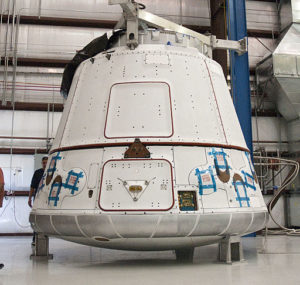
Commercial Orbital Transportation Services (COTS) unwrap Spacex Dragon Capsule
VIDEO 3 min. 52 sec. Cape Canaveral: SpaceX Falcon 9 Rocket Explodes During the 7th Commercial Resupply Services (CRS-7) Launch
Watch this live video of the June 28, 2015 SpaceX Mission failure.
https://www.youtube.com/watch?v=2K030HRTutU
When SpaceX’s Falcon 9 rocket with a Dragon cargo ship carrying supplies to the International Space Station exploded just three minutes after it had been launched from Cape Canaveral, Florida, a spokesman for the Russian Federal Space Agency, Roscosmos, acknowledged that that such incidents happen both with regard to the Russian and the US side.
Stating that the Russian cargo ship, Progress, was due to be launched on July 3, 2015, for the ISS, the Roscosmos spokesman offered to deliver urgent supplies:
Our [American] colleagues [at SpaceX] should be certain that if they need to deliver anything to the station urgently, they will do this using our Progress.
A similar event occurred in April, 2015, but with the failure being on the Russian side, with SpaceX making its scheduled delivery in the same month.
The technology of space travel is filled with recent successes, but also recent failures such as occurred for SpaceX on June 28, 2015:
SpaceX is leading the investigation into the Falcon 9 explosion’s cause.
SpaceX’s reusable Falcon 9 rocket and Dragon cargo capsule exploded shortly after liftoff on June 28, 2015. Following the success of the April mission, the explosion was unexpected. The investigation will start with the available 2 minutes of videotape and telemetry.
The SpaceX Falcon 9 rocket and Dragon spacecraft [broke] apart shortly after liftoff at the Cape Canaveral Air Force Station in Cape Canaveral, Florida, on Sunday, June 28, 2015. [Excerpt from NASA news release]
Today, in the eternal war between SpaceX’s reusable rockets and SpaceX’s robot boat [Science15 ed. note – the rocket was slated to experimentally land on a drone barge], the rockets lost again. Elon Musk’s company loaded up a Dragon capsule full of supplies this morning in what would have been its seventh mission to the International Space Station—and its third attempt to salvage the capsule’s rocket, Falcon 9, by landing on an autonomous barge. But the poor thing didn’t even get the chance to try. Less than three minutes into flight, the rocket and its cargo exploded, their disintegrating parts cloaked by a huge cloud of smoke.
Astronaut Scott Kelly, watching the catastrophic failure from his perch in the ISS above, said it right: “Space is hard.”
It’s not clear yet what caused the rocket to break up. At the time of “launch vehicle failure,” in NASA-speak, Falcon was still firing all of its nine first-stage engines, with the Dragon capsule and second stage Merlin vacuum engine attached. Right now, the NASA mishap and anomaly teams are trying to piece together video analysis of the flight path with the two minutes or so of data sent from the craft before it exploded. Canadian astronaut Chris Hadfield speculated that the failure might have started at the front of the craft—near the second stage engine and the Dragon capsule.
In a NASA press conference today, SpaceX president and COO Gwynne Shotwell confirmed that a problem occurred in that general location, noting an overpressurization event in the liquid oxygen tank in the second stage of the rocket. But SpaceX doesn’t know yet what caused it. Even the typically speculation-happy Musk can’t say more yet, tweeting only that their “data suggests [a] counterintuitive cause.”
To read the full article, click this link.
To see the tweets on which news stories were built after the crash, visit the next page.



